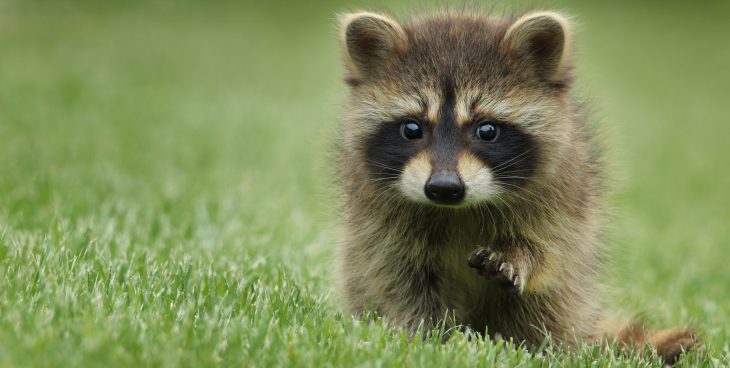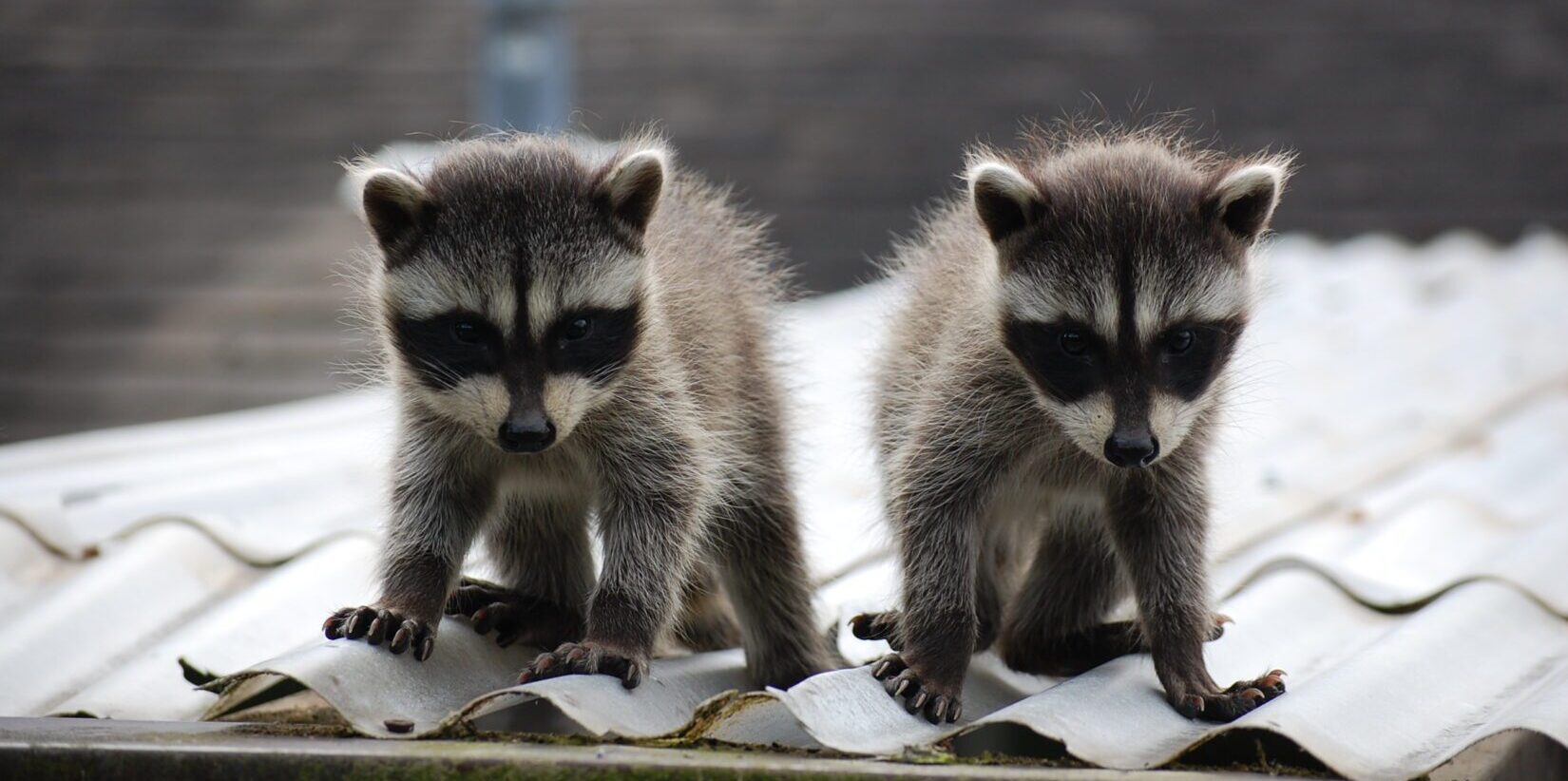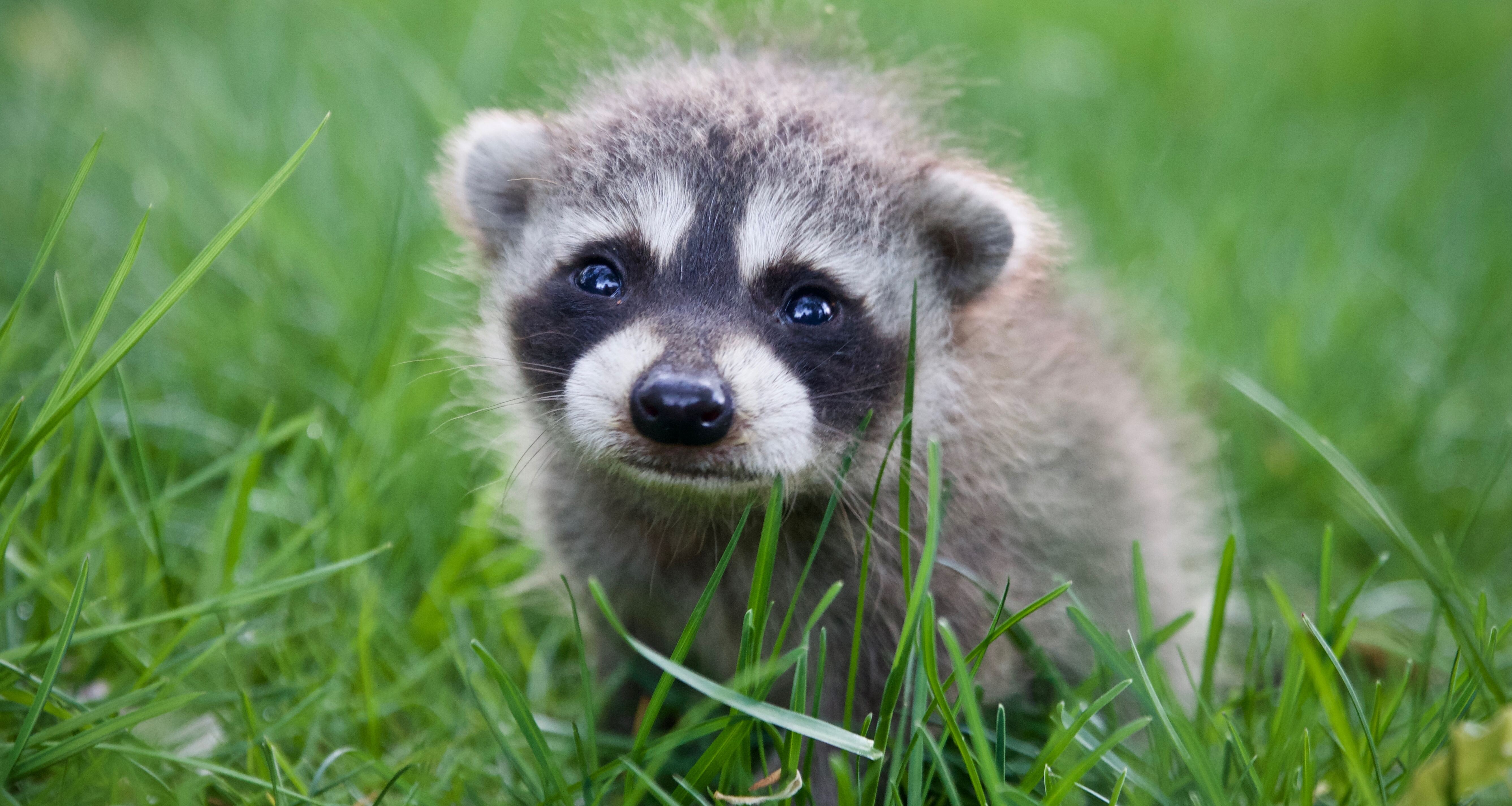
Baby raccoons, also known as kits, are delightful creatures that captivate our hearts with their mischievous antics and endearing appearance. These furry little mammals belong to the Procyonidae family and are native to North America. In this article, we will explore 10 fascinating facts about baby raccoons that shed light on their behavior, development, and unique characteristics.
Baby Raccoons: Adorable Appearance and Unique Markings
When it comes to cuteness, baby raccoons are hard to beat. They possess soft fur that is predominantly dark gray, complemented by a distinctive facial mask of black fur around their eyes. This mask serves as a natural camouflage, helping them blend into their surroundings. As newborns, baby raccoons are incredibly small, weighing just a few ounces, and they gradually grow into adult raccoons, reaching an average size of 2 to 3 feet in length, including their ringed tails.
Baby Raccoons: Born Explorers
From the moment they open their eyes, baby raccoons exhibit a natural curiosity about the world around them. Their innate sense of exploration compels them to venture out of the den, accompanying their mother on her nightly escapades in search of food. These excursions provide the kits with valuable learning experiences, as they observe their mother’s hunting techniques and acquire vital survival skills.
Baby Raccoons: Omnivorous Appetites
While adult raccoons are known for their adaptability in diet, baby raccoons initially rely solely on their mother’s milk. However, as they grow older and their teeth begin to develop, they gradually transition to a more diverse diet. Baby raccoons become omnivorous, consuming a wide array of food including fruits, nuts, insects, small mammals, eggs, and even human garbage if available. This versatile diet helps them thrive in various habitats, ranging from forests to urban areas.
Baby Raccoons: Social Bonding and Playful Nature
Baby raccoons are highly social animals, forming strong bonds within their family unit. They engage in playful interactions with their siblings, fostering essential social skills and strengthening their familial relationships. These play sessions involve climbing trees, wrestling, and engaging in mock fights, allowing the kits to develop their physical abilities and coordination.

Baby Raccoons: Early Motor Skills Development
As baby raccoons grow, they gradually acquire remarkable motor skills. From a young age, they display impressive dexterity and coordination, enabling them to climb trees and explore their surroundings with ease. Their front paws, armed with sharp claws, act as efficient tools for gripping tree branches, helping them ascend heights that other animals find challenging to reach.
Baby Raccoons: Vocal Communication
Although raccoons are not known for their extensive vocal range, baby raccoons communicate through a variety of vocalizations. These sounds include purring, chittering, whining, and a distinct high-pitched cry. These vocal cues allow the kits to communicate their needs, express their emotions, and maintain contact with their mother and siblings within the den.
Baby Raccoons: Adaptability to Urban Environments
One remarkable trait of baby raccoons is their ability to adapt to urban environments. As cities expand and encroach upon natural habitats, raccoons have learned to thrive amidst human presence. Baby raccoons, in particular, have become adept at finding shelter in attics, garages, and crawl spaces, making use of these urban structures as substitute dens. Their adaptability and resourcefulness have contributed to their increasing population in urban areas.
Baby Raccoons: Intelligent Problem Solvers
Baby raccoons possess impressive problem-solving skills. They are known to exhibit innovative behavior when faced with obstacles, such as opening latches, untangling themselves from traps, or accessing hard-to-reach food sources. Their nimble paws and sharp claws, combined with their natural curiosity, enable them to explore various strategies until they find a solution.

Baby Raccoons: Development and Maturation
The development of baby raccoons is a fascinating process. After a gestation period of approximately 63 days, the female raccoon gives birth to a litter of kits, usually ranging from 2 to 5 individuals. These baby raccoons are born blind, deaf, and completely dependent on their mother for nourishment and care. As they grow, their eyes gradually open, and they begin to explore their surroundings. At around 16 weeks of age, the kits become fully weaned and start to venture out independently.
Baby Raccoons: Conservation and Protection
While baby raccoons continue to thrive in many areas, they face certain threats that impact their populations. Loss of natural habitat encounters with vehicles, and diseases are among the challenges they encounter. To protect these enchanting creatures, it is essential to preserve their natural habitats, avoid feeding them intentionally or unintentionally, and refrain from keeping them as pets. By appreciating raccoons from a respectful distance, we can ensure their well-being and contribute to their conservation efforts.
Conclusion
Baby raccoons, with their captivating appearance and playful nature, have managed to capture the hearts of many. From their adorable markings to their intelligent problem-solving abilities, these curious creatures continue to intrigue and inspire. As we embrace a world where nature and urban environments coexist, it is important to appreciate and protect the wildlife that surrounds us, including the fascinating baby raccoons.
Frequently Asked Questions (FAQs)
Are baby raccoons dangerous?
Baby raccoons are not inherently dangerous, but they should not be approached or handled by humans. If you encounter a baby raccoon, it is best to leave it alone and let its mother care for it. If you suspect a baby raccoon is orphaned or in distress, contact a local wildlife rehabilitation center for guidance.
Can I keep a baby raccoon as a pet?
In most jurisdictions, it is illegal to keep a raccoon as a pet without proper permits and licenses. Moreover, raccoons are wild animals with specific dietary and environmental needs that are challenging to meet in a domestic setting. It is best to admire raccoons from a distance and support their well-being in their natural habitat.
How long do baby raccoons stay with their mother?
Baby raccoons typically stay with their mother for about 8 to 12 months. During this time, they learn essential skills for survival, including foraging, hunting, and social behaviors. Once they reach maturity, they become independent and leave to establish their territories.
What should I do if I find a baby raccoon alone?
If you find a baby raccoon alone, observe from a distance for several hours to ensure the mother is not nearby. If the baby raccoon appears sick, injured, or has been alone for an extended period, contact a local wildlife rehabilitation center for advice. In most cases, the mother raccoon is likely to return.
Are baby raccoons nocturnal like adult raccoons?
Baby raccoons initially have underdeveloped night vision and tend to be less active during the night. However, as they mature and their eyesight improves, they gradually become more nocturnal, following the nocturnal behavior of adult raccoons.
Was this page helpful?
Our commitment to delivering trustworthy and engaging content is at the heart of what we do. Each fact on our site is contributed by real users like you, bringing a wealth of diverse insights and information. To ensure the highest standards of accuracy and reliability, our dedicated editors meticulously review each submission. This process guarantees that the facts we share are not only fascinating but also credible. Trust in our commitment to quality and authenticity as you explore and learn with us.
